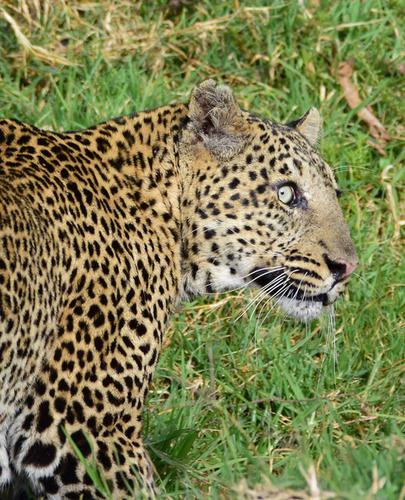当前位置:
X-MOL 学术
›
Funct. Ecol.
›
论文详情
Our official English website, www.x-mol.net, welcomes your
feedback! (Note: you will need to create a separate account there.)
Hunters versus hunted: New perspectives on the energetic costs of survival at the top of the food chain
Functional Ecology ( IF 4.6 ) Pub Date : 2020-10-07 , DOI: 10.1111/1365-2435.13649 Terrie M. Williams 1 , Mads Peter‐Heide Jørgensen 2 , Anthony M. Pagano 3 , Caleb M. Bryce 4
中文翻译:

猎人与被猎:关于食物链顶部生存的精力成本的新观点
更新日期:2020-10-07
Functional Ecology ( IF 4.6 ) Pub Date : 2020-10-07 , DOI: 10.1111/1365-2435.13649 Terrie M. Williams 1 , Mads Peter‐Heide Jørgensen 2 , Anthony M. Pagano 3 , Caleb M. Bryce 4
Affiliation

|
- Global biotic and abiotic threats, particularly from pervasive human activities, are progressively pushing large, apex carnivorous mammals into the functional role of mesopredator. Hunters are now becoming the hunted. Despite marked impacts on these animals and the ecosystems in which they live, little is known about the physiological repercussions of this role downgrading from ultimate to penultimate predator.
- Here we examine how such ecological role reversals alter the physiological processes associated with energy expenditure, and ultimately the cost of survival during peak performance.
- Taxonomic group, preferred habitat and domestication affected the capacity of the oxygen pathway to support high levels of aerobic performance by carnivorous mammals. Fear responses associated with anthropogenic threats also impacted aerobic performance.
- Allometric trends for three energetic metrics [maximum oxygen consumption, field metabolic rates (FMRs) and the cost per stride or stroke], showed distinct trends in aerobic capacity for different evolutionary lineages of mammalian predators. Cursorial canids that chase down prey demonstrated the highest relative maximum oxygen consumption rates (10–25 times resting levels) and FMRs, while ambush predators (i.e. felids) and diving marine mammals had aerobic capacities that were similar to or lower than sedentary domestic mammals of comparable size.
- The maximum energetic cost of performance for apex predators depended on whether the animals were hunters or the hunted. Escape responses were exceptionally costly for marine (narwhal Monodon monoceros) and terrestrial (mountain lion Puma concolor) locomotor specialists, as well as semi‐aquatic (polar bear Ursus maritimus) species; all showed a nearly two‐fold increase in peak energy expenditure when avoiding threats.
- As the duration and frequency of threats to wild species continue to grow, cumulative energetic costs are becoming more apparent. In view of this, attention to the energy demands of apex predators will provide vital predictive power to anticipate mismatches between a species' functional design and human‐induced pressures, and allow for the development of conservation strategies based on how species are built to survive.
中文翻译:

猎人与被猎:关于食物链顶部生存的精力成本的新观点
- 全球生物和非生物威胁,特别是来自人类普遍活动的威胁,正在逐步将大型,先端肉食性哺乳动物推向中压动物的功能角色。猎人现在正成为被猎物。尽管对这些动物和它们所生活的生态系统产生了显着影响,但人们对这种作用从最终捕食者降级为倒数第二只动物的生理影响知之甚少。
- 在这里,我们研究了这种生态角色的逆转如何改变与能量消耗相关的生理过程,并最终改变了峰值性能期间的生存成本。
- 分类群,偏好的栖息地和驯化影响了食肉哺乳动物支持高水平需氧性能的氧气途径的能力。与人为威胁相关的恐惧反应也影响了有氧运动。
- 三个高能指标的最大量度趋势[最大耗氧量,田间代谢率(FMR)和每步或中风的成本]显示了针对哺乳动物捕食者不同进化谱系的有氧能力的明显趋势。追逐猎物的游标犬的相对最大耗氧率(静息水平的10–25倍)和FMR最高,而伏击捕食者(即猫科动物)和潜水的海洋哺乳动物的有氧能力类似于或低于惯常的家养哺乳动物。可比尺寸。
- 顶点掠食者最大的精力消耗表现取决于动物是猎人还是被猎杀。对于海洋(独角鲸Monodon monoceros)和陆地(山狮Puma concolor)运动专家以及半水生(北极熊Ursus maritimus)物种而言,逃逸反应的代价特别高。当避免威胁时,所有这些都显示出峰值能源消耗增加了将近两倍。
- 随着对野生物种威胁的持续时间和频率不断增长,累积的能源成本变得越来越明显。有鉴于此,关注尖顶天敌的能量需求将提供至关重要的预测能力,以预测物种的功能设计与人为压力之间的不匹配,并允许根据物种的生存方式制定保护策略。











































 京公网安备 11010802027423号
京公网安备 11010802027423号